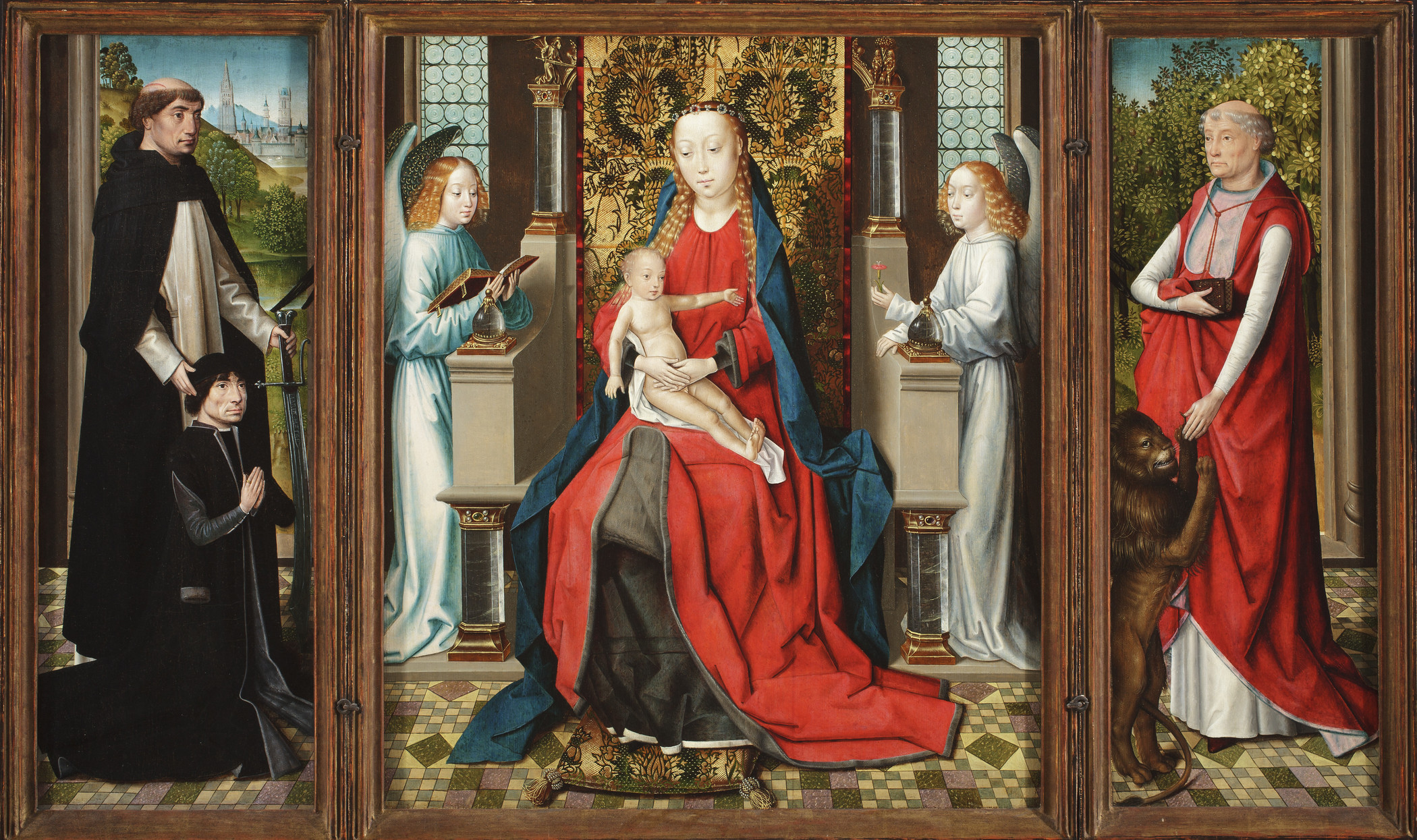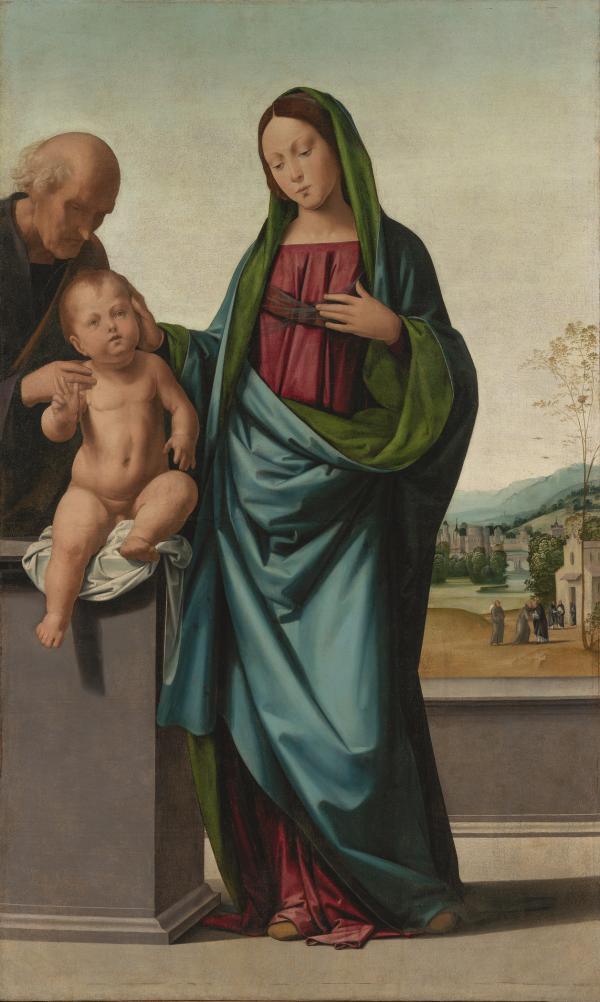Most people are at least somewhat familiar with the Renaissance, which began in Italy in the 14th century and influenced European arts and culture for 300 years. But do you know the differences between Italian and Northern Renaissance paintings?
Below, LACMA educator Mary Lenihan discusses two paintings, Holy Family (c. 1497) and Triptych of Madonna and Child with Angels; Donor and His Patron Saint Peter Martyr; and Saint Jerome and His Lion.
Holy Family is part of the Italian Renaissance tradition, with a sense of three-dimensional space. The figures look natural, and you can tell that they were influenced by the art of the ancient Roman empire, the ruins of which were all around the Italian peninsula. There was a rebirth of interest in learning of the past, and artists tended to make their figures look similar to the ancient Roman statues, even with similar poses.

Painted around the same time, Triptych of Madonna and Child with Angels; Donor and His Patron Saint Peter Martyr; and Saint Jerome and His Lion was created in Holland. Here, you can see that the figures are perhaps not as natural as the Italian painting. This was partly because in the North, particularly in Holland, there were almost no remnants of the ancient Roman empire. While responding to humanism by showing people and depicting the human body, the paintings had a different look. Another interesting aspect of Northern paintings is that they depict interiors, which were bedecked with beautiful, jewel-like objects (like crystal pillars) and detailed tapestry.
Don’t forget to visit Renaissance and Reformation: German Art in the Age of Dürer and Cranach, which explores achievements of German Renaissance art, for more examples of Northern Renaissance art.



